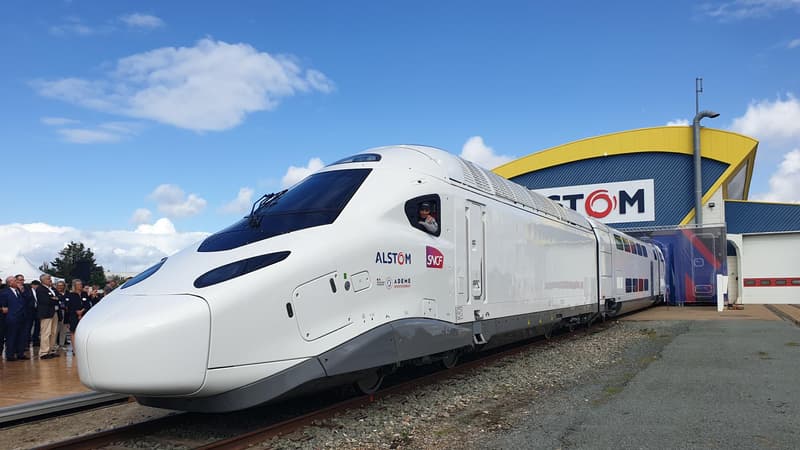“A moment of emotion”, “the fruit of four years of work”, “a revolutionary gem”… The SNCF directors did not lack adjectives this Friday to describe the TGV M. It is, in effect, a important industrial step that has just been taken this Friday with the presentation at the Alstom center in La Rochelle of a complete and functional train of this model, specifically the motor car and passenger cars.
The TGV M is not a revised and corrected classic TGV, but a new train. The manufacturer Alstom started from a blank page at all levels.
With an investment of 3,500 million euros for the acquisition of 115 trains (in other words, a third of the current fleet), the challenge is strategic for SNCF. It must “be the armed arm of the SNCF” in order to achieve a goal clearly established by the group: to double the participation of the train in transport in France.
20% more capacity but above all a lot of modularity
How? Relying on the revolutionary innovations of this TGV developed by Alstom in collaboration with SNCF. The letter “M” first stands for modularity, with the ability to adjust the number of cars on demand to meet market needs as closely as possible by transforming a space from First Class to Second Class, reconfiguring the interior, removing or adding seats, bikes or spaces for luggage.
Above all, this train offers 20% more capacity, that is, a maximum of 740 seats instead of the 634 of a conventional train through an additional car (9 instead of 8) mainly thanks to a much more compact car. than previous generations. But this TGV will be able to circulate with 7, 8 or 9 cars, which is also a novelty.
Reinforce the success of the cross-border to Italy
This TGV M is also intended to operate in Europe, where SNCF’s ambitions are strong, the group already generates 30% of its turnover there. In fact, fifteen of the 115 trains ordered will run on cross-border links.
A way also to excite the Italian Trenitalia that now competes with the SNCF on this link with its famous Red Arrow.
The SNCF also highlights the energy sobriety of this new TGV “at the heart of our work”, insists the manager. Although energy consumption problems are on everyone’s lips today (SNCF is the main industrial consumer of electricity in France), its new design, which contrasts with existing models with a nose lengthened by 2.6 meters for greater aerodynamics , should allow future trains to save 20% energy. and emit 32% less CO2. “But also thanks to the new tools made available to drivers to optimize energy consumption, what matters is this driver/crew binomial in order to make the most of all the capacities of this train”, underlines the manager.
Crucial energy and maintenance savings for SNCF
Alstom adds that these savings are also possible thanks to the return of energy to the catenary during braking and more efficient motors. A strong argument for travellers, who are increasingly sensitive to these issues, but also for the operator’s operating costs. Like the 30% reduction in maintenance costs per train promised by Alstom (in particular thanks to predictive maintenance), a crucial issue for SNCF.
Because for the carrier it will be necessary to adapt their Technicentres but also their stations with certain modifications in terms of signaling and platforms.
What are the next steps for the TGV M? After the first dynamic tests in the Czech Republic in the next few weeks, then in France in 2023, the design of the cars will start (there is still a lot of work on the seats) and the installation of a completely new bar car. promises to be revolutionary, according to the SNCF.
As for the commercial operation, it should start in 2024 on the Southeast link, the historical (and most profitable) line of the TGV. Alstom will deliver 12 trains a year.
Source: BFM TV


